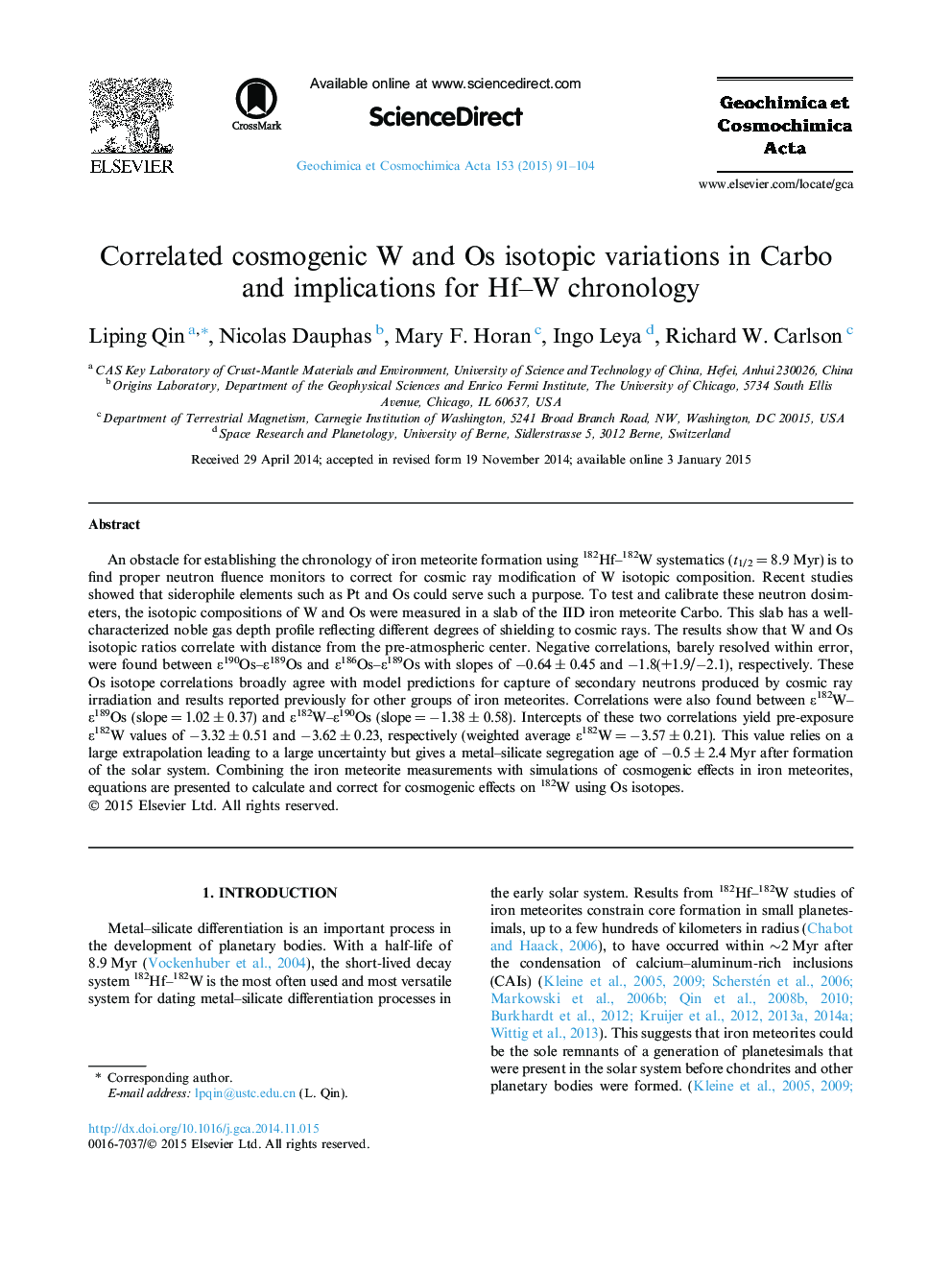| Article ID | Journal | Published Year | Pages | File Type |
|---|---|---|---|---|
| 4701970 | Geochimica et Cosmochimica Acta | 2015 | 14 Pages |
Abstract
An obstacle for establishing the chronology of iron meteorite formation using 182Hf-182W systematics (t1/2 = 8.9 Myr) is to find proper neutron fluence monitors to correct for cosmic ray modification of W isotopic composition. Recent studies showed that siderophile elements such as Pt and Os could serve such a purpose. To test and calibrate these neutron dosimeters, the isotopic compositions of W and Os were measured in a slab of the IID iron meteorite Carbo. This slab has a well-characterized noble gas depth profile reflecting different degrees of shielding to cosmic rays. The results show that W and Os isotopic ratios correlate with distance from the pre-atmospheric center. Negative correlations, barely resolved within error, were found between ε190Os-ε189Os and ε186Os-ε189Os with slopes of â0.64 ± 0.45 and â1.8(+1.9/â2.1), respectively. These Os isotope correlations broadly agree with model predictions for capture of secondary neutrons produced by cosmic ray irradiation and results reported previously for other groups of iron meteorites. Correlations were also found between ε182W-ε189Os (slope = 1.02 ± 0.37) and ε182W-ε190Os (slope = â1.38 ± 0.58). Intercepts of these two correlations yield pre-exposure ε182W values of â3.32 ± 0.51 and â3.62 ± 0.23, respectively (weighted average ε182W = â3.57 ± 0.21). This value relies on a large extrapolation leading to a large uncertainty but gives a metal-silicate segregation age of â0.5 ± 2.4 Myr after formation of the solar system. Combining the iron meteorite measurements with simulations of cosmogenic effects in iron meteorites, equations are presented to calculate and correct for cosmogenic effects on 182W using Os isotopes.
Related Topics
Physical Sciences and Engineering
Earth and Planetary Sciences
Geochemistry and Petrology
Authors
Liping Qin, Nicolas Dauphas, Mary F. Horan, Ingo Leya, Richard W. Carlson,
